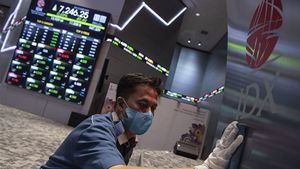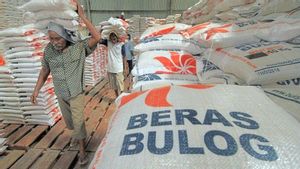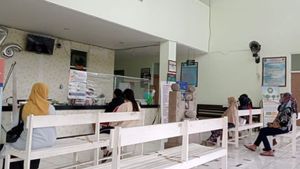JAKARTA - Chief Executive of Banking Supervision of the Financial Services Authority (OJK) Dian Ediana Rae said the dynamics of the global and domestic economy has affected the development of bank credit growth to date.
The growth of credit in the banking sector over the last 10 years was only 7-12 percent. Whereas in the period before 2014, credit growth could reach 20 percent. In 2012, credit was able to grow by 23.1 percent and in 2011 credit growth reached 25.5 percent.
" Globally, there is an increase in liquidity caused by the implementation of quantitative easing by the Fed which will take place between 2008-2014. The global abundance of funds also affects the increase in sources of funds in Indonesia," said Dian in Jakarta, quoted from Antara, Thursday 4 April.
Global economic dynamics include rising interest rates that affect global liquidity and commodity price movements, especially energy commodities that are closely related to the domestic economy.
On the other hand, credit growth is also influenced by demand which is determined by economic growth and business expansion space.
Around 2008 to 2015 there was also an increase in commodity prices which caused a high space for credit expansion, especially in the processing industry. This has an impact on the increase in other sectors such as trade and property ownership.
Furthermore, in December 2013, the central bank of the United States (US) or the Fed began announcing plans to conduct tapering and normalize policies. This causes global liquidity tightening which also affects investor risk appetite and domestic liquidity availability.
SEE ALSO:
Commodity prices are also gradually decreasing and normalizing so that expansion space becomes more limited and reduces credit demand.
Tightening liquidity causes banks to start to be more selective in lending. Indonesia's gross domestic product (GDP) growth in general was in the range of 5 percent since 2014 or even experienced a contraction in 2020 during the COVID-19 pandemic.
Therefore, Dian said credit growth, which is in the range of 7-12 percent, is certainly in line with economic conditions that are not only influenced by domestic conditions but are also closely related to the dynamics of the global economy.
The English, Chinese, Japanese, Arabic, and French versions are automatically generated by the AI. So there may still be inaccuracies in translating, please always see Indonesian as our main language. (system supported by DigitalSiber.id)















